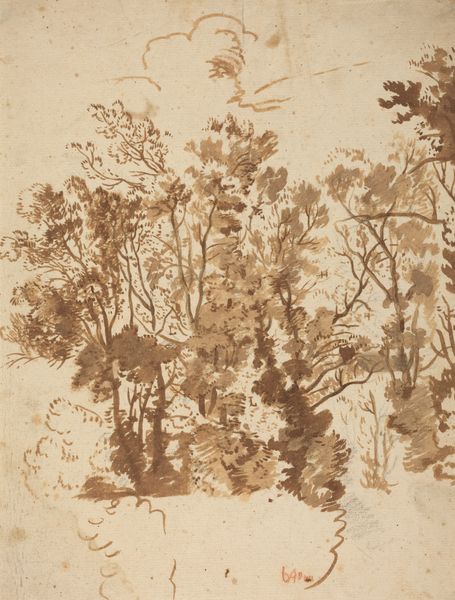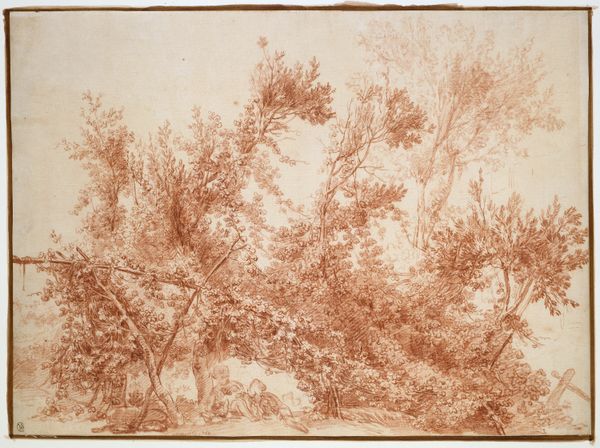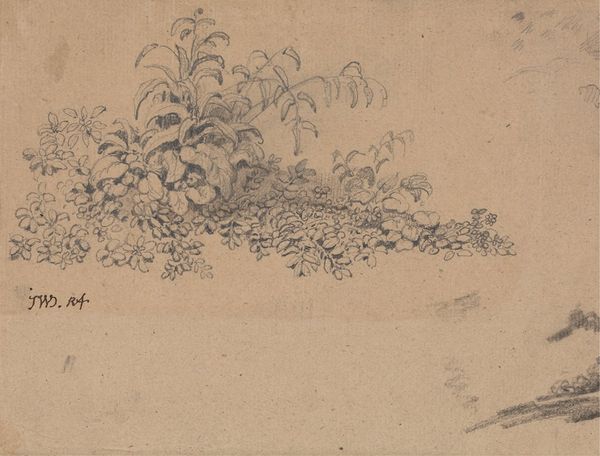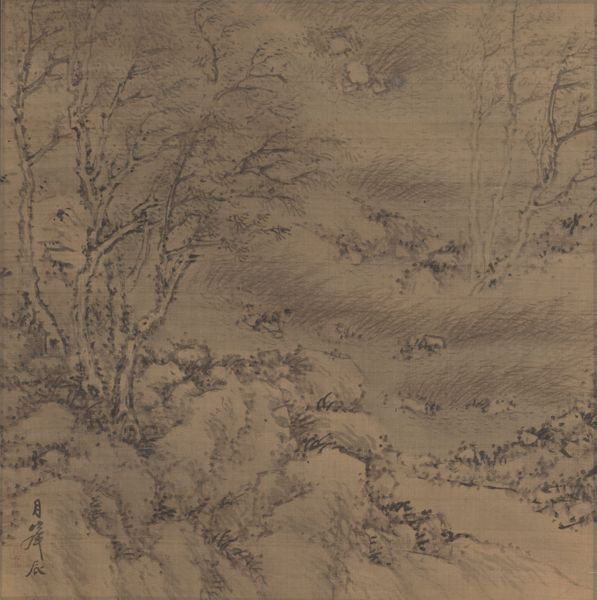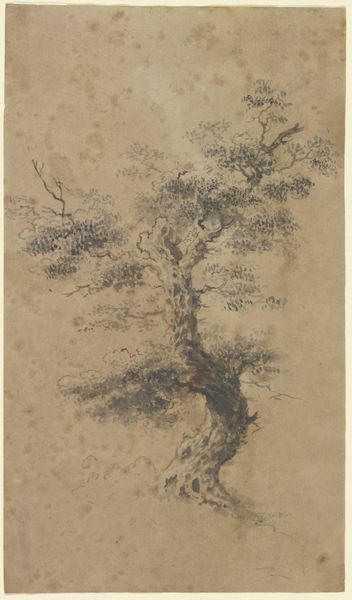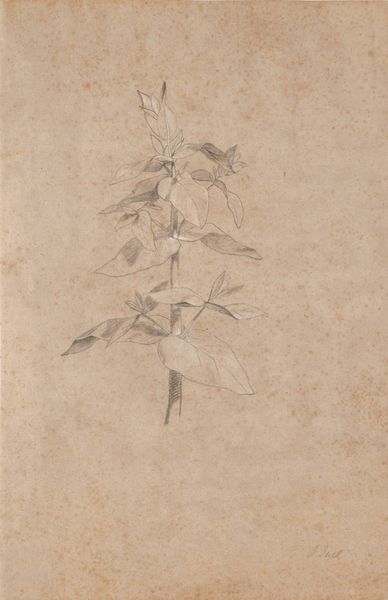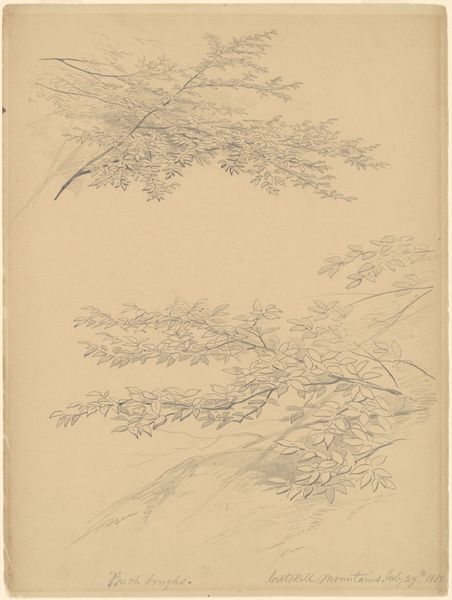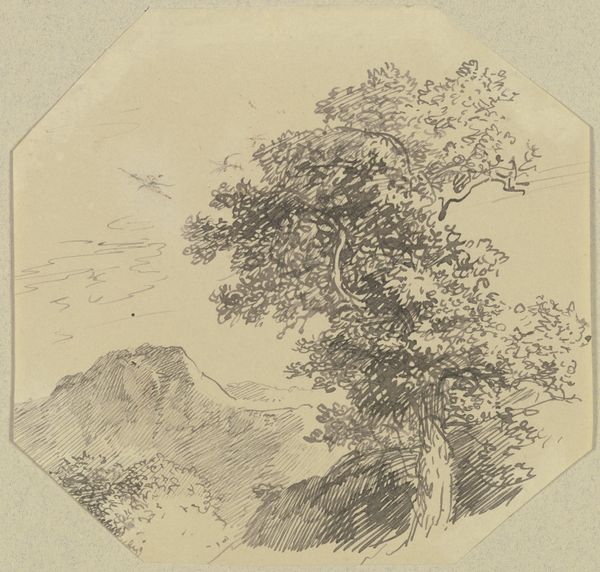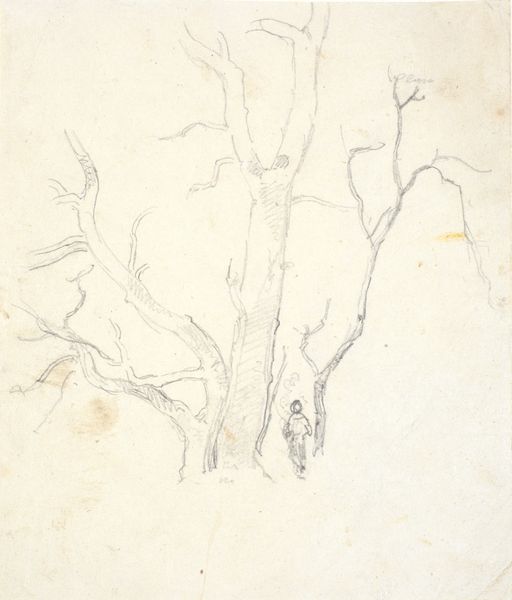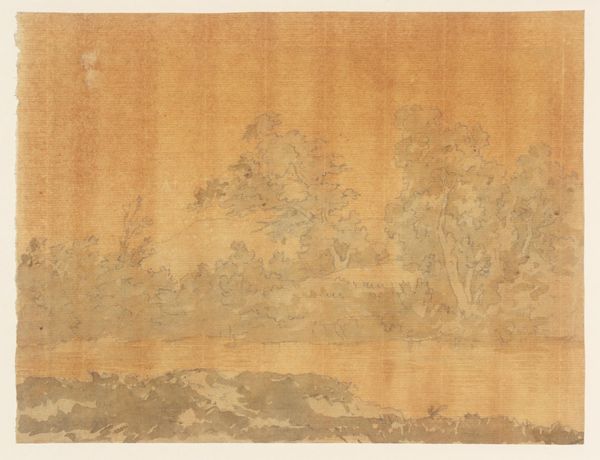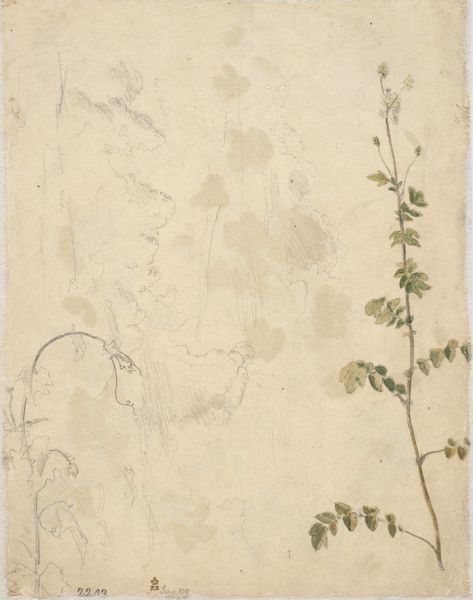
drawing, plein-air, paper, pencil
#
drawing
#
organic
#
plein-air
#
landscape
#
paper
#
pencil
#
organic texture
#
realism
Dimensions: sheet: 23.97 × 31.43 cm (9 7/16 × 12 3/8 in.)
Copyright: National Gallery of Art: CC0 1.0
Editor: This drawing is titled *Foliage*, and it was created by William Trost Richards in the late 19th century, using pencil on paper. It looks like a detailed study of leaves and branches. What I find immediately striking is the contrast between the dense clusters of foliage and the more open, airy spaces around them. What stands out to you? Curator: What stands out for me is the almost obsessive attention to detail, hinting at the symbolism we often associate with nature. These meticulously rendered leaves evoke not only visual accuracy, but perhaps also the symbolic weight of nature itself - regeneration, life cycles, and even mortality. Do you see echoes of vanitas traditions here, where detailed natural studies act as a reminder of our fleeting existence? Editor: That's fascinating; I hadn’t considered that angle at all. So, even in what seems like a straightforward nature study, there's a deeper layer of meaning connected to broader cultural anxieties about life and death? Curator: Precisely. The artist isn't just showing us foliage, but also perhaps tapping into our cultural memory of how nature has been used for centuries: as a symbol of hope and fear, permanence and ephemerality. Notice how some leaves are in full light, others in shadow; does that evoke particular feelings for you? Editor: Now that you mention it, the shadows do lend a certain…melancholy to the drawing. Like a reminder that beauty is often intertwined with decay. Curator: Yes, the shadows and highlights interplay like cultural metaphors of consciousness and unconsciousness in nature and its ability to trigger strong psychological responses. Editor: That's a really insightful perspective; I'll definitely look at nature studies differently from now on. Curator: And I'm glad we could bring a new reading to an already deeply textured work.
Comments
No comments
Be the first to comment and join the conversation on the ultimate creative platform.
